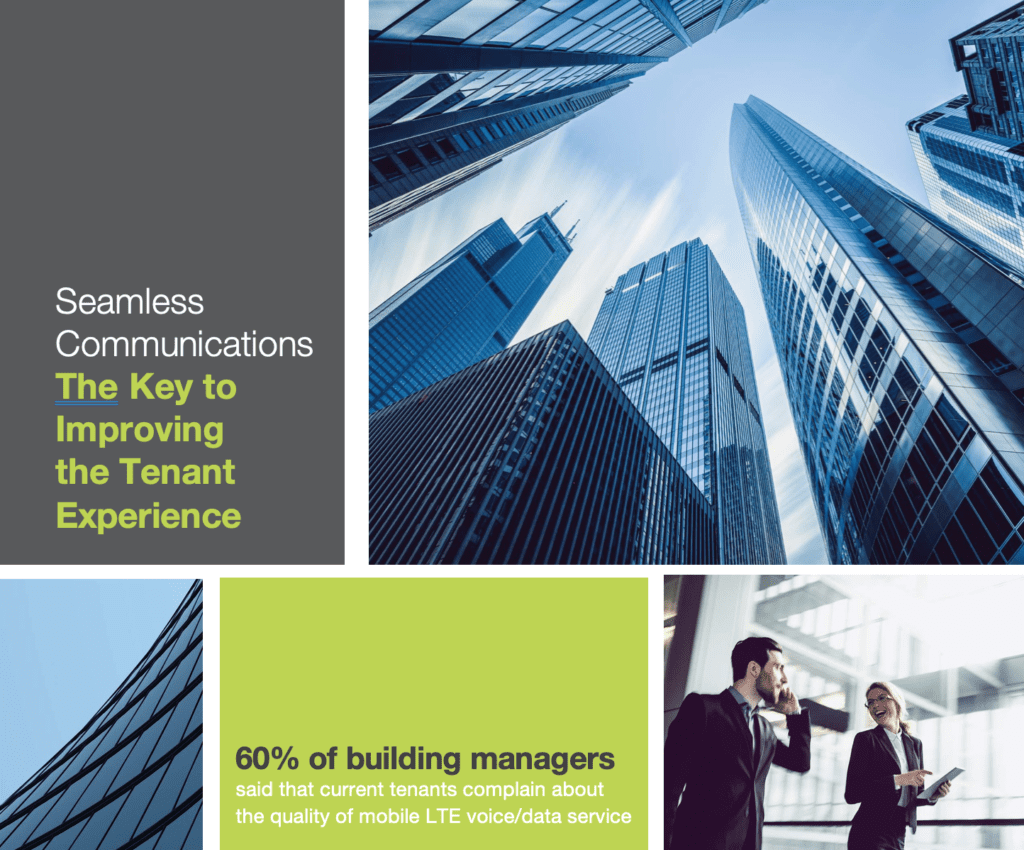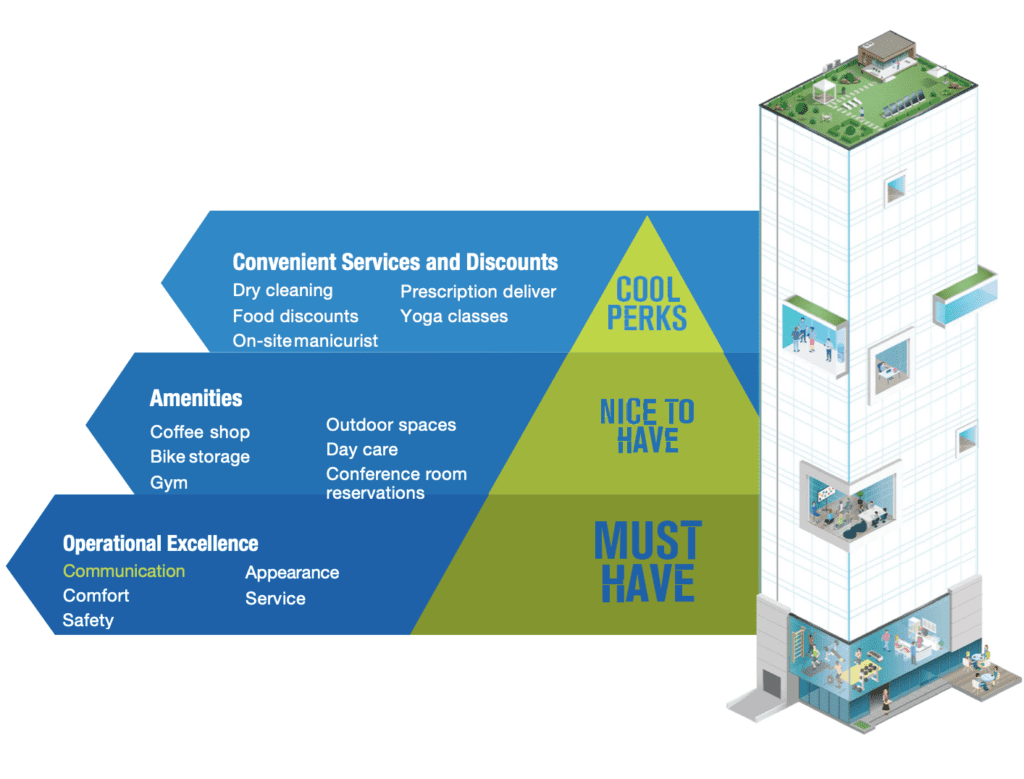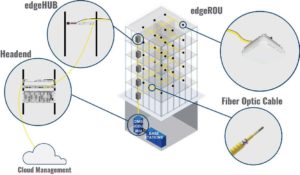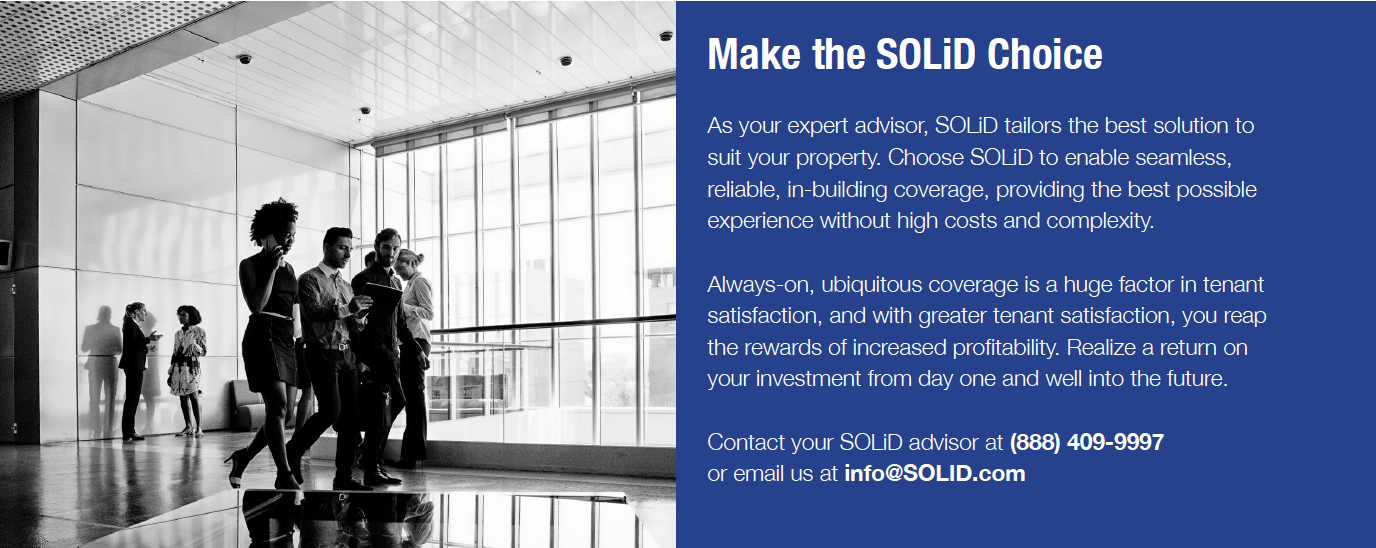Seamless Communications: The Key to Improving Tenant Experience

It’s not surprising that 80% of property teams plan to spend at least half their time this year improving the tenant experience. Attracting and retaining quality tenants is at the heart of success in the $3.5 trillion CRE industry. An excellent tenant experience means greater tenant loyalty, higher occupancy, longer leases, premium prices, and increased profitability.
In iGR’s 2019 Building Manager Survey, more than 60% of the managers surveyed said that current tenants complain about the quality of mobile LTE voice/data service. More than 80% said that prospective tenants ask about the quality of mobile LTE voice/data service.
The gap between the communication experience that tenants want and their current reality is your opportunity to improve the tenant experience, and ultimately, profitability.
A Great Tenant Experience Starts with the Basics
The tenant experience is the sum total of how tenants and employees feelabout the workspace. While there are many elements that contribute to
the overall experience, not every amenity has the same weight. It is helpful to think in terms of must-haves, nice-to-haves, and cool perks. Getting the priorities right can make all the difference in tenant satisfaction and profitability.

- Must-haves are the basics, and they form the foundation of a positive experience. Think things like temperature, air quality, safety, building appearance, and communication.
- Nice-to-haves might include a gym, bike storage, a cafe or coffee shop, retail, and maybe conference rooms. But these have little impact if the must-haves are lacking.
- Cool perks are luxuries. Electric car charging, nap pods, car wash, or dry cleaning service are examples. Again, these are great if the must-haves are in place.
Tenants rate public Wi-Fi as the top amenity contributing to positive workplace experience. It is rated higher than a gym, café, coffee shop, or meeting and event space. Communication and connection are so important that 74% of Millennials surveyed said they couldn’t go more than one day without access to their smartphones.
To retain top talent, companies strive to provide a work environment that inspires employees to their best performance. To that end, today’s workplace is different from office plans of the past. Open workspaces, a team environment, remote work, and bring-your-own-device (BYOD) are common and growing. New bandwidth-consuming technologies like 5G and the Internet of Things (IoT) are quickly emerging. The success of all of these trends rests on a foundation of reliable, flexible communication infrastructure.

In-Building Communications Strategies
Wired, Wi-Fi, and cellular systems are three options for providing service within a building, and each has strengths and weaknesses.
- Wired service is reliable and less subject to interference than other options. It is expensive due to the time and labor needed to run the wire. It is also inflexible. If the building or office layout changes, the cables also have to be moved, and costs can be high.
- Wi-Fi is easy to deploy, but it can get bogged down, and there can be areas of poor reception. In addition, as the number of people in the building or office increases, the coverage per person is less, and voice quality can decrease.
- Cellular service is ubiquitous in outdoor areas, but walk into a modern or legacy commercial building, and the signal can drop as you move. Building design and materials such as concrete, steel, aluminum, furniture, equipment, and other objects can block cellular signals.
A SOLiD Solution
The SOLiD solution for in-building mobile coverage is distributed antenna system (DAS) technology. DAS is used in large buildings and public spaces to make the mobile signals available everywhere, no matter the surrounding building materials or design. The systems easily flex with demand surges, so transmission is as robust on quiet weekends as it is during a busy conference.
A DAS distributes mobile signals from a central point to antennas deployed
throughout the building, and the system is engineered to cover even hard-to-reach spots. DAS systems support the signals from all of the major network operators and are less costly than deploying multiple layers of single-service-provider radio systems.

SOLiD’s DAS modular technology fits in tight IT closets and is sized to be an unobtrusive element in ceilings and on walls. And with Fiber-to-the-Edge Technology, SOLiD builds a fiber-based backhaul solution that can handle your growing bandwidth needs.
Long seen as a nice-to-have, providing in-building cellular coverage is now as important as providing basic utilities. SOLiD’s Fiber-to-the-Edge technology is a game-changer. It is simple, scalable, and ready to grow as you grow.
| Factors that impact in-building Cellular Service | The SOLiD DAS Solution |
| Building architecture – building and window materials, other buildings, distance from the cell tower, and carrier frequency can impact service. | SOLiD DAS solutions are engineered to cover even the hardest-to-serve parts of the building. |
| Costs of adding standalone cellular systems – multiple radios are needed for each major network operator, adding expense, consuming large amounts of IT closet space, and requiring multiple layers of cables and antennas. Moves and changes are complicated, expensive, and disruptive. | SOLiD DAS is a neutral-host solution that provides coverage for all connected major network operators. Capacity scales with demand. Little IT closet space is needed, and with fiber-to-the-edge technology, moves and changes are easy and inexpensive. |
| The need to have mobile carriers provide signal sources. | SOLiD DAS is approved for connection by all major network operators. SOLiD and partners can help you obtain signal sources. |
| Rapidly changing technology and fears of obsolescence. | SOLiD DAS solutions provide modularity, scalability, and a robust roadmap that provides for incremental changes to protect your investment and avoid rip-and-replace. |
| New technology that promises everything without a clear path forward. | SOLiD brings you industry knowledge, the most current technology, and a track record of results. |
| An overwhelming set of manufacturers, installers and service providers. | SOLiD has the experience to evaluate, advise, and implement a complete system, keeping the process simple. |
